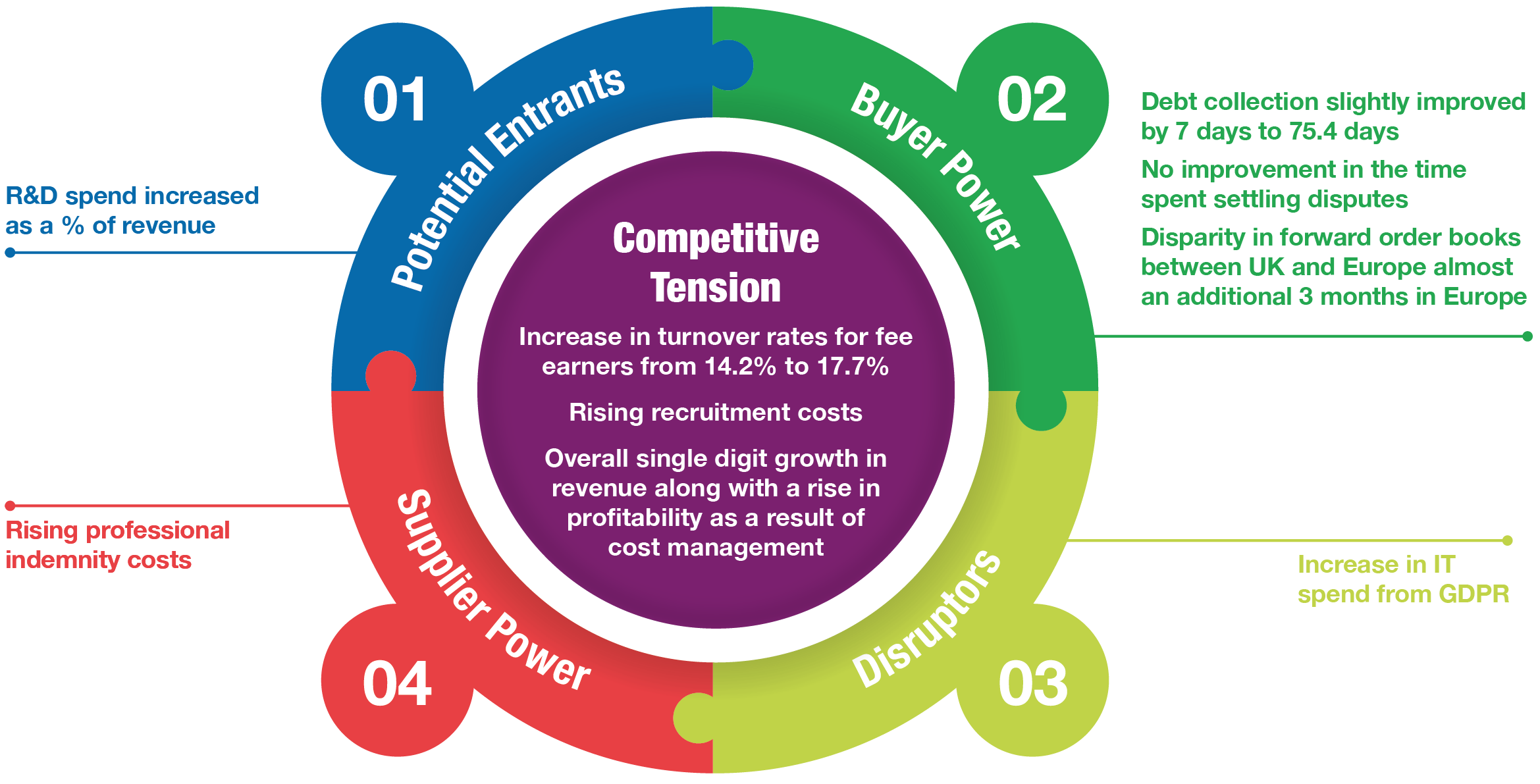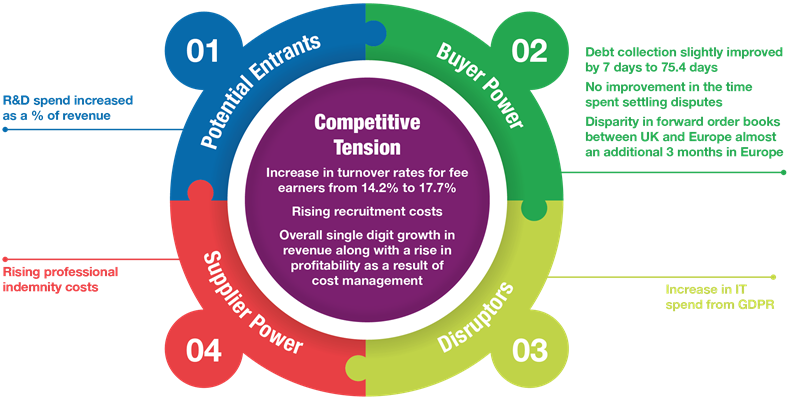Following its launch at the European CEO Conference 2018, we can now share some of the highlights from this year's Benchmarking project.
The only in-depth analysis of the health of the consulting and engineering industry in Europe, the Benchmarking study was launched in 2006 and explores industry trends. Participants are provided with a company-specific comparison, as well as a copy of the Benchmarking report.
We have reproduced Hannah Vicker's graphical analysis of the competitive forces shaping our industry, as well as her introduction to the report below which summarises the major findings from this year's study. You can also read more about the findings over at Infrastructure Intelligence.


This year’s ACE Benchmarking project comes at a critical time for our industry. Facing continued political uncertainty in the shape of a still to be defined Brexit, it is increasingly important that we maintain clear sight of industry trends in profitability and productivity and continue to benchmark our collective performance with our peers in the UK and in Europe.
Pipeline and workflow
The headline numbers are relatively strong. While infrastructure activity in the UK is up 3.2% year-on-year to an estimated £19.55bn; other forecasts are even more positive for the sector. The Construction Products Association (CPA) is forecasting an impressive 13% jump in infrastructure activity next year to £22.1bn. This would make infrastructure the stand-out construction sector in a year when construction activity in aggregate is estimated to increase by 2.3%. Construction as a whole is forecast to cool off even further in 2020 with an output increase of only 1.9%, but the CPA is forecasting infrastructure to grow a further 6.8% in 2020.
Next year’s Spending Review, and the pending regulatory settlements in Water and Energy, will provide a better indication of the size and shape of the infrastructure pipeline, whilst global macroeconomic trends and the conclusion of the Brexit negotiations should be the overriding factors in the pattern of investment in property.
Indications of industry influencers
Looking into what the Benchmarking survey tells us about specific industry influencers has been revealing. UK firms sharply increased their spending on IT during 2018, possibly a result of the introduction of the GDPR regulations. However, a more positive interpretation would be this is the first indication of digital transformation taking hold. Each business will know its own story on this front.
If we look specifically at client-consultant relationships, the phrase “bad but getting better” seems apt. Debt collection in the UK improved slightly with the average debt collection down to 75.4 days’ sales (improving by seven days from a year previously) while a sharp improvement in Europe saw a debt collection period of 70.5 days; lower than the UK average for the first time ever in the history of our Benchmarking reports.
Alongside indicators such as rising Professional Indemnity costs and no improvement in the time spent on settling disputes, this points to little improvement in fair and transparent contracting.
Finally, the short-term cycles of investment in infrastructure and uncertainty around the property market still shows in the disparity between the UK and European consultant order books - 9.9 months and 12.6 months respectively.
Responding and evolving
The most significant trends this year are around how our consultancy businesses are adapting and evolving. This is obvious in the figures around staff training, with UK fee earners continuing to spend more time on training than they had in earlier years, as well as the 7.5% increase in UK headcount.
However, the scramble for skilled talent continues to cause problems for many firms and this year’s figures show total UK turnover rates for fee earners increased for 14.2% to 17.7%. This is mirrored in the European staff turnover figures, with fee earners leaving for all reasons averaging 17.8%. Knowing this, it will come as no surprise that recruitment costs rose by double digits for our industry last year. It is clear that attracting and retaining talent remains a key challenge for our industry.
Overall performance
In this year’s Benchmarking project, we note single-digit growth in revenue (net of sub-contracted costs) both within the UK and European markets - levels more muted than in recent years. There has been a welcome rise in profitability, increasing at a faster rate than revenue growth; but profitability continues to track the range of high single digits.
In this situation it is cost control that will help our industry manage the margins and this has been a successful strategy for both the UK and European firms in this report. Whilst there are slightly better profitability margins than many contractors, this is still too marginal a performance to produce the returns our members seek for re-investment, expansion, to embrace the opportunities of digital transformation and to prepare for the next phase of significant growth.
Copies of ACE's Benchmarking overview report 2018 are available to purchase now.
